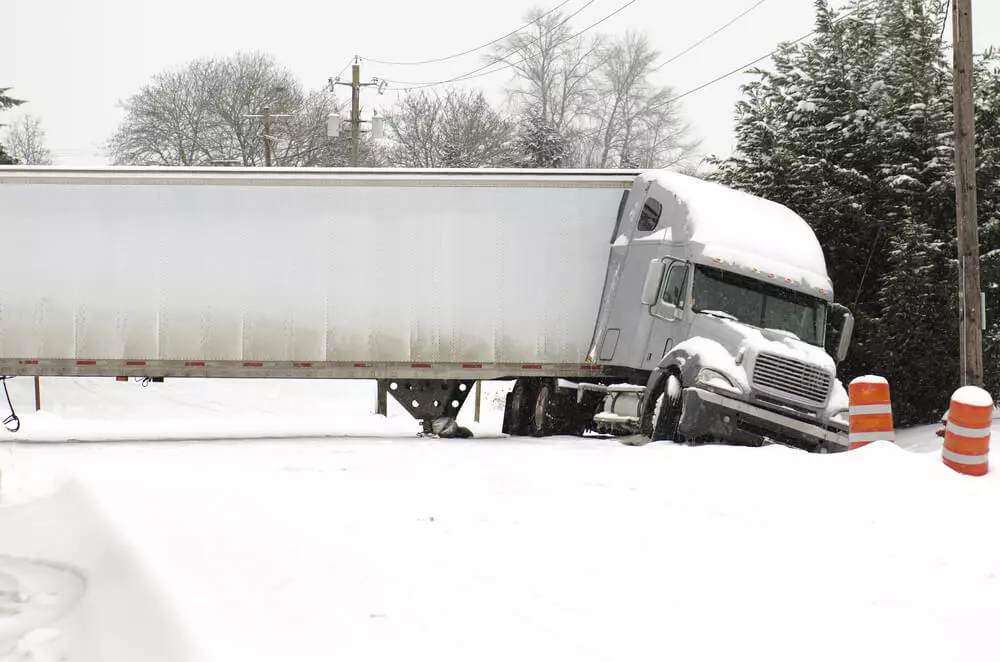Trucks are a common sight on Texas roads. They’re essential to our country’s economy, but they can be dangerous. Truck accidents cause thousands of injuries every year, and the results are often catastrophic. But truck accidents happen in many ways, from head-on collisions to sideswipes. We look at the different types of truck accidents and your options if you’ve been in a truck accident caused by another driver’s negligence.
Areas in Greater San Antonio We Serve
Common Types of Truck Accidents
Head-on Collisions
Head-on collisions are one of the most dangerous types of truck accidents, often resulting in life-changing — if not fatal — injuries. This type of accident happens when two vehicles collide head-on, with one vehicle traveling in a straight line and the other vehicle turning directly into it.
According to the Federal Motor Carrier Safety Administration (FMCSA), head-on collisions make up 17.9% of all fatal traffic accidents nationwide, making them more likely than any other type of accident to result in death or severe injury.
Head-on collisions can happen for several reasons. One of the most common is driver fatigue. Drivers often work long days and have demanding schedules, so fatigue is fairly common. Unfortunately, when truck drivers fail to pull over and rest when tiredness sets in and instead continue to drive, they put themselves and others at huge risk. If a truck driver swerves into oncoming traffic because of fatigue, an accident is practically unavoidable, as there’s no time for anyone to react.
A truck driver might also lose control of their vehicle and cause this type of truck accident because they drive while intoxicated or distracted.
Truck Rollovers
A truck rollover is one of the most terrifying types of truck accidents — and among the most dangerous for a truck driver. Commercial trucks have a high center of gravity — much higher than a standard passenger car. It means turning too sharply around a corner or driving too fast can cause a truck to flip or roll over onto its side.
Sometimes, a rollover accident happens because a truck driver is fatigued, speeding, distracted, or under the influence. Other times, this type of truck accident may happen through no fault of the driver.
A common example is if a trailer is improperly loaded or overloaded, causing it to sway even when a driver safely navigates a turn. Overloading cargo can also cause an accident in other ways, such as putting pressure on the hitch holding the truck and trailer together, leading it to break.
Another common cause of rollover accidents is a tire blowout, which can happen if tires aren’t properly maintained or due to a design or manufacturing defect. According to a causation study carried out by the Federal Motor Carrier Safety Administration, tire blowouts were the most common cause of rollover accidents in 18-wheeler trucks.
Rollover accidents are particularly dangerous because a truck may roll over and slide some distance, especially at high speeds. If a vehicle is in the path of the rolling truck, it will likely get hit or crushed.
Rear-End Collisions
A rear-end collision happens when a driver hits the back of a vehicle in front of them. It usually happens because a truck fails to stop in time.
There are many reasons why this type of truck accident occurs. Truck drivers are not immune from making mistakes, such as driving too fast. This is more common than you might think, as truck drivers are under pressure to meet tight deadlines, so they may drive faster than permitted to make a delivery on time.
The problem is that trucks are large and heavy, so it takes a lot longer for a truck driver to stop their vehicle. A loaded semi-truck weighing 80 thousand pounds and traveling at 65 miles per hour takes 525 feet — or almost the length of two football fields — to come to a complete stop. If a truck is tailing close to another vehicle, it may be impossible to avoid a collision, even if a trucker slams the brakes.
To reduce the risk of a rear-end collision happening, the FMCSA recommends truck drivers leave a gap of five to six seconds from the vehicle in front. Still, if a driver is distracted, in a rush, or intoxicated, it’s not unrealistic to assume that they’re not leaving an adequate gap.
A rear-end accident can be catastrophic, even at low speeds, due to the sheer size and weight differential. It’s not uncommon for this type of truck accident to cause horrific injuries, severe property damage, and even death.
Jackknife Accidents
Jackknife accidents are a common type of truck accident that occurs when a truck’s trailer swings and folds in on the truck at an angle, creating a major road hazard. In these accidents, the truck cab — where the driver sits — usually stays in place, creating a 90-degree angle.
They can be particularly dangerous, as the driver cannot correct the movement, leaving the trailer free to strike oncoming traffic in its path. Even if other vehicles can avoid the trailer, they may swerve and crash independently or cause a pileup.
Jackknife accidents are typically a result of driver error. Trucks are difficult to maneuver around corners, especially at high speeds. When a trucker makes a sharp turn, it can cause the trailer to pivot and skid out to one side. These accidents can also happen due to improper braking. When a trucker brakes too quickly, especially in inclement weather such as rain or snow, it can cause the truck to skid and the trailer to jackknife.
Side-Impact Accidents
The most common type of truck accident is a side-impact or T-bone accident. Also called broadside crashes or angle collisions, T-bone accidents can happen to any type of vehicle, but the impact is particularly damaging when a truck is involved.
If a tractor-trailer, semi-truck, or another commercial truck runs a red light or fails to yield right of way at an intersection, a truck might strike the side of a car. This creates a “T” shape, hence the name.
T-bone truck accidents can be fatal for passenger cars struck at the side. The side of a vehicle offers little protection, and older cars often lack safety features such as side-impact airbags and steel beams to absorb some of the impact of a crash. If a motorcycle is going through an intersection and a truck driver recklessly speeds through or ignores a stop sign, the impact will likely be fatal.
This type of truck accident can also happen if a truck driver improperly turns into a lane of traffic, causing another vehicle to slam head-on into the side of the truck.
What to Do if You’re in One of These Common Types of Truck Accidents
These types of truck accidents can cause severe, life-changing injuries, from brain trauma to paralysis. If the accident wasn’t your fault, you shouldn’t have to face hefty medical bills and struggle to make ends meet. Our dedicated Texas personal injury lawyers can help you get the compensation you’re rightfully entitled to.
For a free, no-obligation case review to determine who might be liable for your accident and see how much compensation you might receive, contact our San Antonio and McAllen truck accident lawyers. We’re available 24/7 and work on a contingency basis, so you’ll never pay any legal fees until you win.

